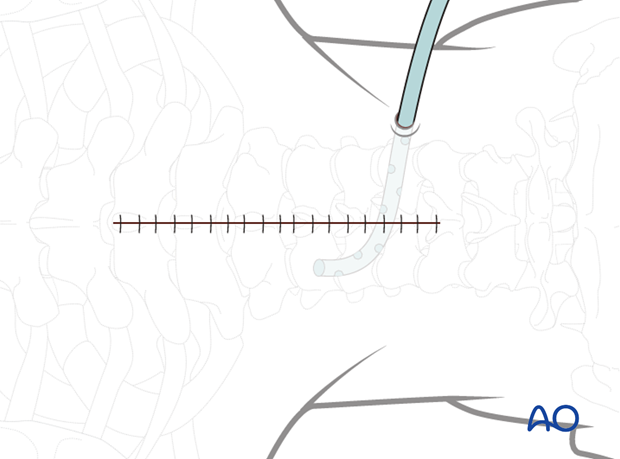Posterior access to the cervicothoracic junction
1. Skin incision
The skin and subcutaneous tissue may be infiltrated with a 1:500,000 epinephrine solution to achieve hemostasis.
The exact location of the incision is identified using a C-arm and marked.
A midline skin incision is made centered over the involved segment.
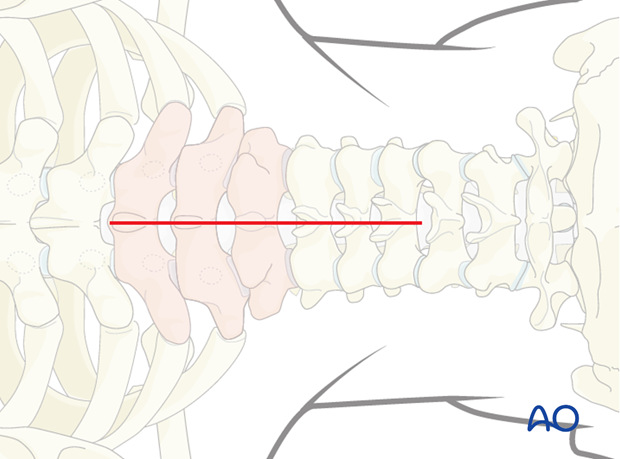
2. Dissection
The dissection is carried down in the midline through the subcutaneous tissue and the fascia of the upper back musculature including the trapezius, latissimus dorsi, rhomboids, and paraspinous muscles to the tips of the spinous processes.
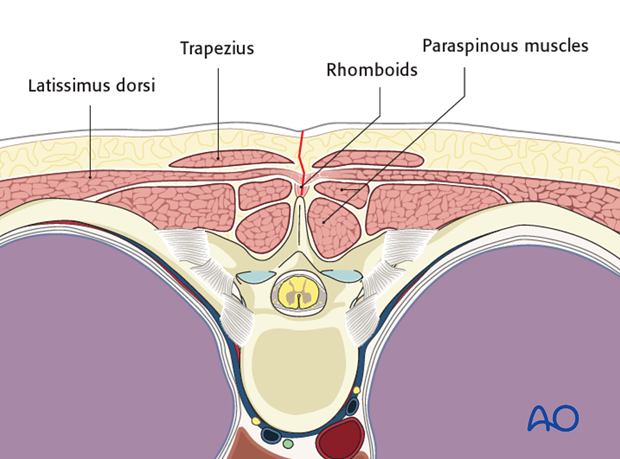
The dissection should be carried down through the midline to decrease bleeding.
It is necessary to confirm the vertebral level with fluoroscopy as soon as bony structures are visible. This is done prior to any further dissection.
Self-retaining retractors are used to expose the surgical field.
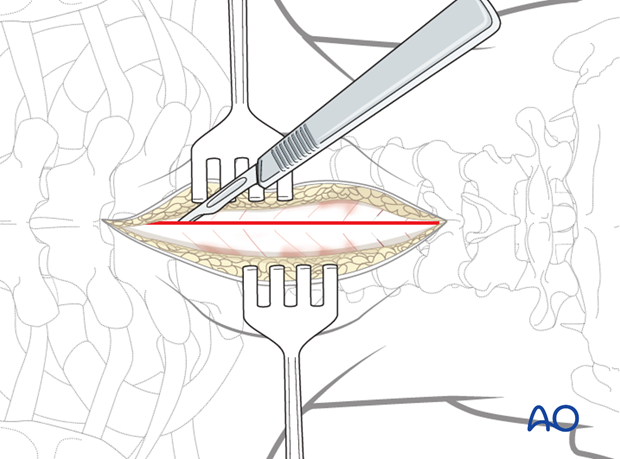
The paraspinal muscles are elevated subperiosteally from the underlying laminae, using a Cobb elevator or electrocautery. Dissection is performed along the posterior bony elements bilaterally.
Review preoperative images to verify whether the tumor invades the lamina. In such cases, exposure of the posterior elements should be performed with great care and the use of Cobb elevators should be avoided.
The use of a subperiosteal dissection minimizes bleeding and muscle damage.
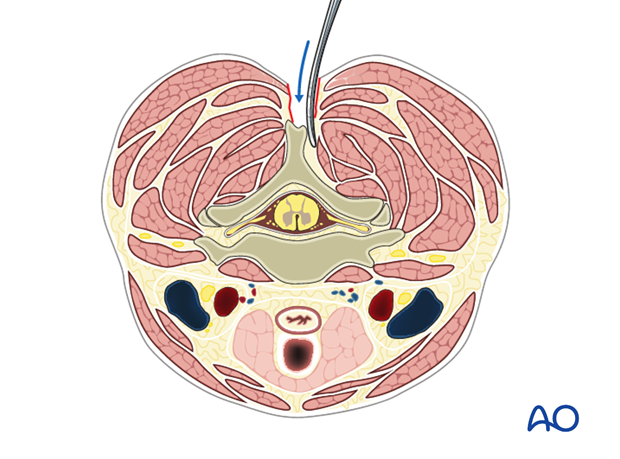
During exposure, care is taken not to injure the facet joint capsule of the levels cranial or caudal to the intended fusion, as this might lead to unintended adjacent level joint fusion or degeneration.
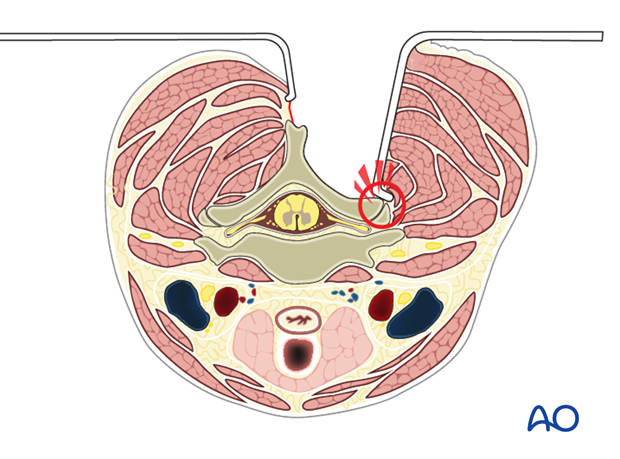
3. Closure
Drains are usually inserted via a separate stab incision.
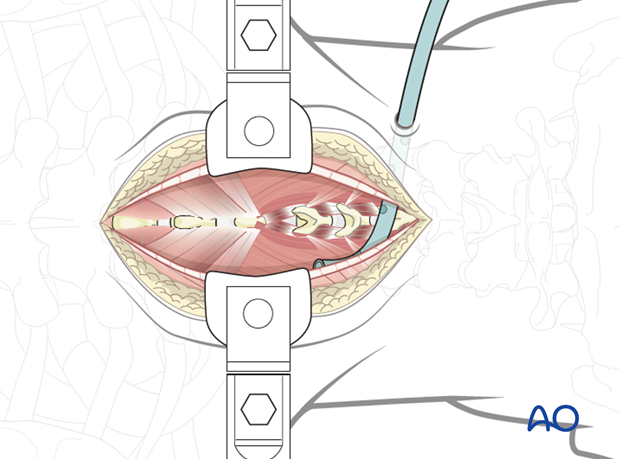
Once the surgical fixation and decompression have been performed, the muscles are approximated over a deep suction drain using interrupted sutures.
For patients undergoing revision metastatic spine tumor surgery and/or with history of radiation, plastic surgery should perform the soft tissue reconstruction to decrease the risk of wound complications.
The fascial layer is closed with continuous or interrupted sutures.
For patients undergoing metastatic spine tumor surgery, intrawound vancomycin can be applied to decrease the risk of postoperative wound complications.
The approximation of the posterior cervicothoracic muscles is subject to considerable tension and fascial dehiscence. The use of nonabsorbable sutures for fascial closure should be considered.
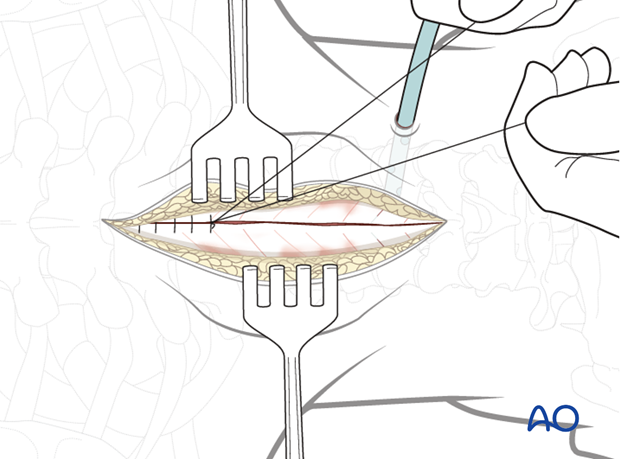
Note: If the fascia is closed without a previous muscle approximation, a dead space may be created. This should be avoided.
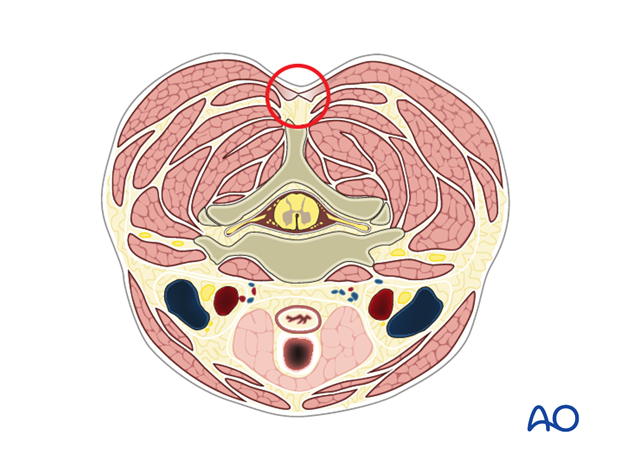
The subcutaneous layers and skin are sutured.
